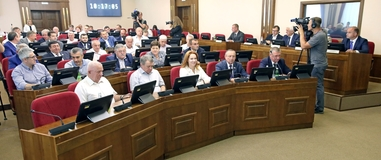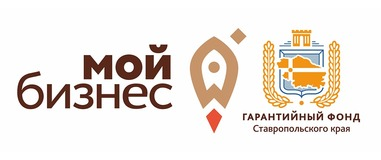hotline for investors
+7 (8652) 35-22-92, 2161
Mon-Fri: 9:00-18:00, Break: 13:00-14:00Resort-City of Kislovodsk
Kislovodsk is in the South of Stavropol Krai, right at the border with Karachai-Circassia and Kabardino-Balkaria, only 65 km away from Mount Elbrus. This city is located in a small and picturesque valley surrounded with the slopes of the Great Caucasus Range and between two rivers joining together – the Olkhovka and the Berezovka that fall into the Pudkumok. The valley stretches around 4 km south-east to north-west.
Kislovodsk is 234 km away from Stavropol, 64 km of Mineralnye Vody railway station, in the northern highlands of the Great Caucasus (800-1,069 m above sea). The place was once a Russian Military Fortification founded in 1803, and its name and origin itself come from the sour mineral water of Narzan.
The straight distance from Kislovodsk to Elbrus (the highest peak of the Caucasus and Europe) is shorter than 70 km and you can enjoy the view of this mountain from the Upper Park. Elbrus is so beautiful and gracious that people spend hours just watching it, and if you use a powerful binocular you can see all the minutest details of its northern side, sparkling glaciers, black volcanic rocks, and even observe strong wind ripping and whirling snow from the icy caps of the silent volcano.
The landscape is highlands all covered with ravines and small valleys. Kislovodsk's neighborhoods are all on different levels above sea with the lowest point of 817 m above sea (near the Narzan Gallery) the top part sitting 1,409 m above sea, on the Great Saddle in Kislovodsk Park.
Kislovodsk and its outskirts can boast of an extremely beautiful landscape surrounded with sand and chalk mountains that make numerous terraces engraved with deep caves and small grottoes. Some red sand rocks have been subjected to winds for hundreds of years, which shaped them into various creatures so strange and mysterious that understanding these can be limited by your imagination alone. In the east the place is among hills all joining one another with smaller heights and a chain of chalk highlands that together make up the middle part of the Djinal Range (height up to 1,500 m). In the north the Kislovodsk Valley is cut off by a chain of terrace-like chalk mountains of the Borgustan Range reaching 1,200 m above sea. The two ranges are part of the Pastbischny Range, one of the northern ranges of the Great Caucasus. In the south and south-east the valley is limited with the Skalisty /Rocky/ Range cuestas – the Kabardin Range (up to 1,600 m) and the Bermamyt Plateau all run through with ravines of the rivers Alikonovka, Berezovka, and Olkhovka.
Therapeutic Profile
Kislovodsk resort with its carbonated mineral waters, specific climate, and landscape is best for treating the following types of health issues:
Blood circulation diseases (conditions after rheumatic endomyocarditis);
Myocarditis (6-8 months after acute stage of the disease) under lack of active process. Under poor blood circulation (max of Degree I or without that); with no poor prognosis for heart rhythm (polytopic, frequent, grouped, early extrasystoles; paroxysmal heartbeat disorders; fibrillation, etc., as well as disturbed conductivity /atrioventricular block above Degree I);
Cardiac defect – mitral valve insufficiency;
Combined mitral heart defect dominated with mitral valve insufficiency;
Condition after commissurotomy (at least 6-8 months after surgery) with no signs of active rheumatic process, with no insufficiency, and at poor blood circulation no higher than Degree I, with no poor prognosis for disturbed heartbeat and conductivity (atrioventricular block above Degree I, bifascicular heart block in His band);
ischemic heart disease with rare angina attacks (Functional Class 1-11), with no poor prognosis for disturbed heartbeat and conductivity, at poor blood circulation no higher than Degree I;
Hypertension, Stage 1-11;
Hypotension;
Nervous system diseases – neuroses with dominant dysfunction in cardiovascular system;
Cerebral atherosclerosis with no disturbance in brain blood circulation, as well as 3-4 and more months after transient cerebrovascular disease (mild degree);
Non-specified respiration issues beyond acute phase, at lung-vascular defect no higher than Degree I.
Mineral Waters
The special asset of the resort area of Kislovodsk is its Narzan. The knowledge of this mineral water is based on long-term research of the carbonated water coming out in springs at an area called Kislovodsk Pool of Narzan.
The first officially registered description of Kislovodsk springs can be found in the notes by Gottlieb Schober, a doctor of Academy of Science in St. Petersburg who mentioned "a rather sour spring near the area of five mountains".
"It's a pity that Russia manages its natural gifts so poorly. Millions of liters of curative water are just wasted, while Russians prefer travelling to Europe", these were the words by P.S. Pallas, a member of St. Petersburg Academy of Science who offered the first substantial account of the Narzan Spring in 1773.
F.P. Haass (1810) wrote: "One who never heard of this water will never understand the respect expressed by the previous owners of these springs – Circassian people. They called this spring hero's water or alcohol (narzana, nar – hero; zana – alcohol)". A legend tells us about a brave hero – Aref, who fought fiercely against his enemies yet was wounded badly in one of the battles.
Until 1928 Narzan had been the only mineral spring in Kislovodsk. Later on this stock was expanded significantly due to discovering a number of new abundant and substantially valuable mineral springs both in Kislovodsk itself and in the valleys of the Berezovka, the Olkhovka, and the Podkumok. The former one is 8 km away from the center of the resort place while the latter two are on the outskirts of Kislovodsk and belong, actually, to the Kislovodsk mineral water pool. The Narzans of Kislovodsk are part of the balneological group of carbonated waters and only differ in the degree of mineralization and the ratio of the basic ions, which allows dividing them into three major groups:
Group 1 includes Narzan, Well 5/0-bis as well as the waters of the areas near the Berezovka and the Pudkumok. The low-mineralization waters (ab. 2 g/l) of this group reveal sulfate-hydrocarbonate magnesium-calcium ion-salt composition with a varying level of sodium ions; carbon dioxide level – up to 1.0 g/l; temperature – 12°C. The major type of Narzan is mostly used for applications (externally used).
An important role in the development and planning of the resort spa building belonged to the construction of a mineral water pipeline supplying Kislovodsk with carbonated water (Narzans) from the Kuma pool (Village of Krasny Vostok, 43 km away from Kislovodsk). The Narzans of the Kuma area, in their ion-salt composition and the degree of mineralization (7.8 g/l) are close to Pyatigorsk hot Narzans, yet showing a lower content of sulfates. Their concentration of carbon dioxide is about 1.5 g/l. These waters are cold and rich in iron. They are used (not diluted) for drinking while can also be used for spas when mixed with the waters of the central Kislovodsk (Narzan Source, Well 5/0, and partially Well 5/0-bis) and Berezovsky area (Well 7-B-bns).
The total capacity of the sources of Kislovodsk and the water supplied from the Kuma pool is 3,767 m3/day (operational and prospective reserves as officially approved).
Another group includes waters like Dolomite Narzan (Well № 7,5/0,12), which differ from the earlier mentioned ones due to a higher level of mineralization (about 5.0 g/l), as well as due to an increase in the concentration of sodium and chloride ions, and high content of carbon dioxide (above 2.0 g/l). This is used for therapeutic consumption (drinking) and are pumped to the Narzan gallery (Well№ 7) and Well-Room (Well № 5/0 and 12).
A third group includes waters like Sulfate Narzan with mineralization levels of 5.2-6.7 g/l, mostly due to high concentrations of magnesium sulfates and sodium. Sulfate Narzans were first discovered in a 169-meter-deep well drilled in 1934.
There is a considerable therapeutic potential ensured by small amounts of arsenic, and active iron (up to 15 mg/l) as well as trace elements (boron, zinc, manganese and strontium). All these features make Sulfate Narzans particularly valuable as a therapeutic drink. Sulfate Narzan enhances gastric secretion, improves digestion, biliary liver function, reduces drum belly, and regulates the bowel function.
The carbonated waters of the Podkumok and Olkhovka areas (Wells № 5-НП, Пд Э, 115-bis) also belong to the sulfate type yet, unlike these they have sodium sulfates dominant rather magnesium sulfates. The water of Well № 5-НП is supplied to the Narodny Well-Room (Alikonovskaya Ravine), while Wells № 115-Э and 115-bis – to the resort hotels Sosnovy Bor and Raduga.
You can enjoy the taste of mineral waters in the following places:
Zhelyabovsky Well-Room (3, Kirova Street; Zhelyabova Street);
Novy (Round) Well-Room (Kurortny Boulevard);
Narzan Gallery (19, Kurortny Boulevard).









